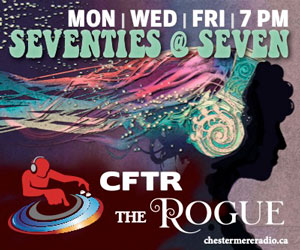Your intrepid liquor reporter has noticed the days growing shorter and the nights growing longer, a dismal portent of the coming winter that follows our too-short summer in Alberta.
Fully intending to make the most of the last days of the season, your humble narrator has been working his way through the cocktails of South America, land of eternal summer.
There may be no cocktail that is more South American than the famous Pisco Sour, which is subject of a bitter rivalry between Peru and Chile, both of whom claim the cocktail as their own national tipple.
For those not already familiar with the Pisco Sour, it has a long and sordid history, ripe with colonial imperialism and national pride.
It all began in the 16th century, when Spanish conquistadors invaded Peru, adding to the ever-growing Spanish Empire. Unsurprisingly, grapevines were one of the first goods imported from Spain, and a domestic wine industry began shortly after, and quickly spread across South America.
The Spanish settlers produced not only wine, but also used the grapes to distill a rotgut grape brandy commonly known as aguardiente (that’s firewater to you gringos).
It was this rotgut aguardiente, distilled to a strength of 45%-60% ABV that became popular as a spirit. Since the majority of production was around the Peruvian shipping port of Pisco, the spirit soon became known as Pisco.
For decades, the Pisco spirit was consumed straight, or cut with fruit juices to make it more palatable for consumption by the lower classes.
However, by the 1920’s, the drink had moved upscale, similar to other spirits like Gin or Bourbon, that were originally considered vulgar spirits unfit for the upper crust of society.
Much of the newfound popularity of the Pisco spirit can be attributed to an upscale drinking establishment in the Peruvian capital of Lima, who swapped out the Bourbon in a Whiskey Sour to create a new cocktail called the Pisco Sour.
The Peruvian version of the Pisco Sour starts with two shots of Pisco, followed by the juice from two freshly squeezed limes, an ounce of simple syrup, and an ounce of egg white, added purely to provide a frothy texture. Shake briskly over ice cubes in a cocktail shaker, then pour into a rocks glass. For the finishing touch, add a single drop of Angostura bitters for flavouring.
While the Peruvian Pisco Sour is the most popular version worldwide, neighbouring Chile makes a classier version, in large part because their version of the Pisco spirit tends to be aged longer in wooden barrels, removing much of the harsh taste.
The Chilean version will sometimes skip the egg whites, replacing them with passion fruit pulp, which replicates the fuzzy texture while providing a more tropical flavor.
The differences will seem minor to those of us in Alberta, but national rivalries over the perfect Pisco Sour recipe are fierce between the neighbouring countries of Peru and Chile, with port cities usually offering both styles to avoid conflict with locals and visitors alike.
The flavour of a Pisco Sour can vary greatly, depending on the type of Pisco used. Peruvian Pisco tends to be an unaged grape distillate, similar to Italian Grappa, and has a harsh taste that must be balanced by the addition of simple syrup.
Chilean Pisco comes from the same grape distillate, but is usually blended with undistilled wine, then aged in wooden barrels to soften the flavours.
Luckily, Pisco is a very flexible spirit, and can be used in countless cocktails, just by substituting for Gin, Tequila, or Whiskey.
Your intrepid liquor reporter had a hard time convincing one of his lady friends to try it out, until I hit upon the idea of a Pisco Mojito. Apparently, all it took was swapping the Rum out for Pisco in her favourite lady cocktail. If only I convince her to watch Star Wars as easily!
Equally popular with the ladies is the Piscopolitan, the South American take on the classic Cosmopolitan martini. Add one part Pisco, one part Vermouth, and two parts cranberry juice to a martini shaker over crushed ice. Shake briskly and pour into a martini glass garnished with a lemon peel. You will feel like you are in a Latin version of Sex and the City!
You can find bottles of Pisco at well-stocked booze merchants in Alberta, generally around the $30 mark. Live the eternal summer by drinking one today!








